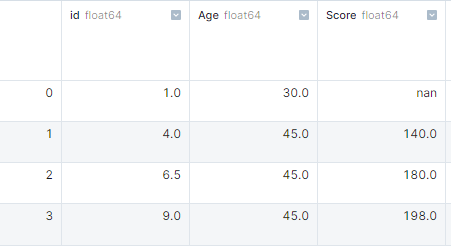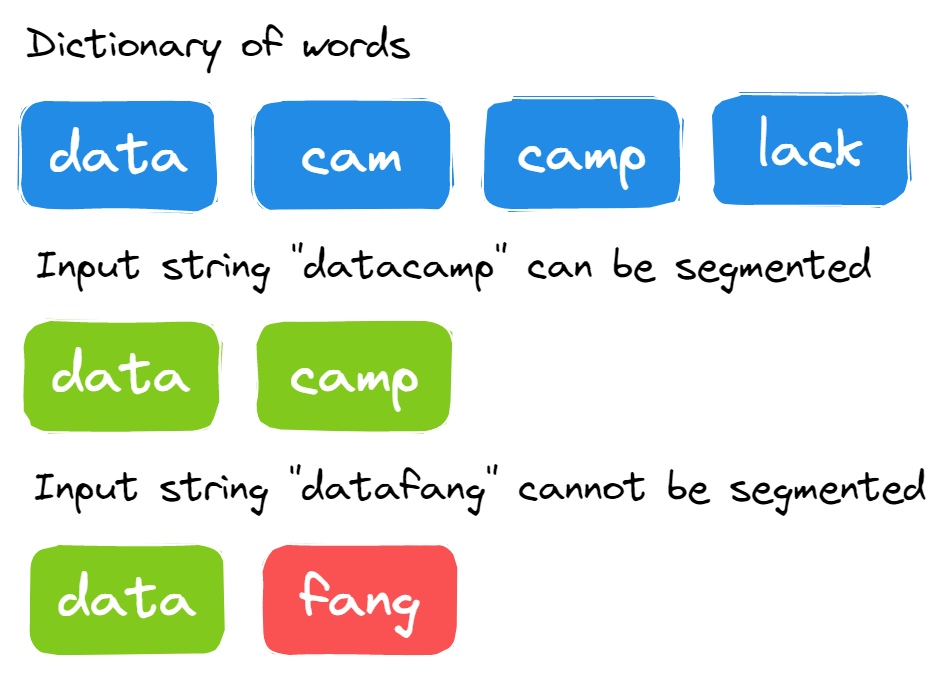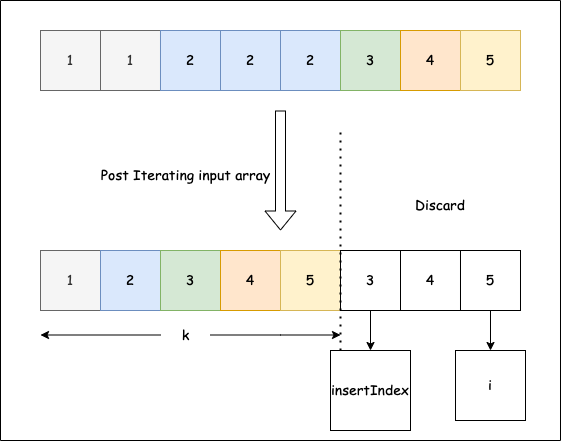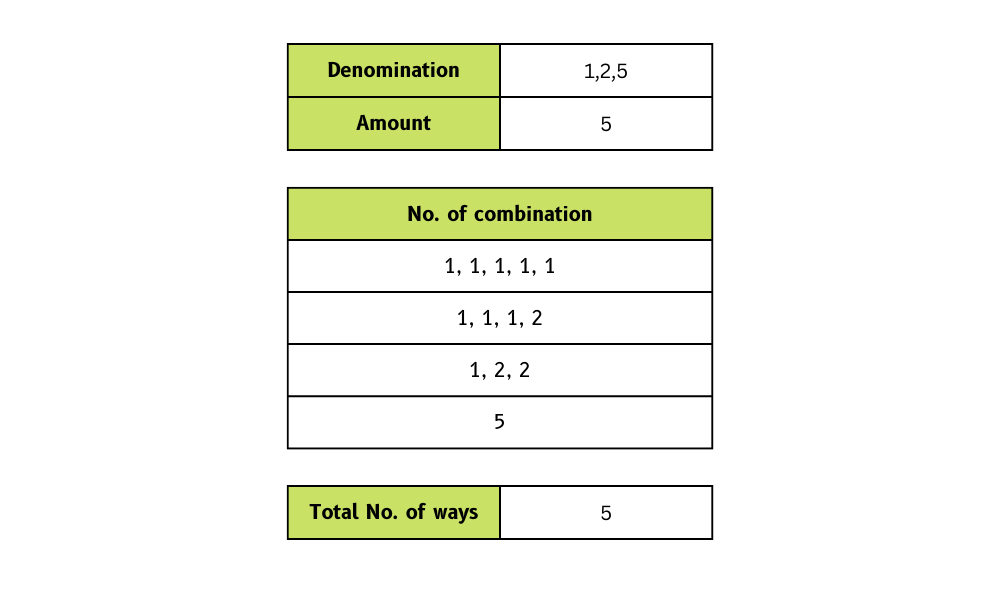Course

| Read the Spanish version 🇪🇸 of this article |
Python is the most popular language in the tech industry. During the interview, you will be asked to solve the challenge using Python and explain complex Python functionality. To pass the technical and coding stage, you need a guide or mock questions to practice.
In this post, we have outlined the most common question asked during technical interviews. Practicing these questions can help data professionals, developers, and software engineers successfully pass the interview stage.
Get certified as a data professional and stand out to potential employers.
Unlock your career with custom learning
Trying to strengthen your data skills? Our AI assistant explores your goals and interests to recommend the perfect content. Start building skills that matter to you and your career.
Basic Python Interview Questions
These are some of the questions you might encounter during an entry-level Python interview.
1. Can you differentiate between a List and a Tuple?
Lists and tuples are Python data structures. The list is dynamic and whereas the tuple has static characteristics. They both have various advantages and use cases.
List
The list is the mutable data type, consumes more memory, and it is better for element insertion and deletion. Furthermore, it has several building functions, and the implication of iterations is slower compared to Tuple.
Example:
a_list = ["Data", "Camp", "Tutorial"]Tuple
The Tuple is an immutable data type, and it is generally used for accessing the elements. It is faster and consumes less memory, but it lacks built-in methods.
Example:
a_tuple = ("Data", "Camp", "Tutorial")Learn more in our Python Lists tutorial.
2. What is __init__() in Python?
It is known as a constructor in OOP terminology. It is used to initiate a state when you create a new object. For example, you can assign values to object properties or run the operations that are necessary when the object is created.
The __init__() method is reserved for Python classes, and it is called automatically when you create a new object.
Example:
We have created a `book_shop` class and added the constructor and `book()` function. The constructor will store the book title name and the `book()` function will print the book name.
To test our code we have initialized the `b` object with “Sandman” and executed the `book()` function.
class book_shop:
# constructor
def __init__(self, title):
self.title = title
# Sample method
def book(self):
print('The tile of the book is', self.title)
b = book_shop('Sandman')
b.book()
# The tile of the book is Sandman3. What is the difference between a mutable data type and an immutable data type?
The mutable Python data types can be modified, and they can change at runtime, for example, a List, Dictionary, and Set.
The immutable Python data types can not be changed or modified, and they remain unchanged during runtime, for example, a Numeric, String, and Tuple.
4. Explain List, Dictionary, and Tuple comprehension with an example.
List
List comprehension offers one-liner syntax to create a new list based on the values of the existing list. You can use a `for loop` to replicate the same thing, but it will require you to write multiple lines, and sometimes it can get complex.
List comprehension eases the creation of the list based on existing iterable.
my_list = [i for i in range(1, 10)]
my_list
# [1, 2, 3, 4, 5, 6, 7, 8, 9]Dictionary
Similar to a List comprehension, you can create a dictionary based on an existing table with a single line of code. You need to enclose the operation with curly brackets `{}`.
my_dict = {i for i in range(1, 10)}
my_dict
# {1, 2, 3, 4, 5, 6, 7, 8, 9}Tuple
It is a bit different for Tuples. You can create Tuple comprehension using round brackets `()`, but it will return a generator object, not a tuple comprehension.
You can run the loop to extract the elements or convert them to a list.
my_tuple = (i for i in range(1, 10))
my_tuple
# <generator object <genexpr> at 0x7fb91b151430>You can learn more in our Python Tuples tutorial.
Advanced Python Interview Questions
These interview questions are for more experienced Python practitioners.
5. What is monkey patching in Python?
Monkey patching in Python is a dynamic technique that can change the behavior of the code at run-time. In short, you can modify a class or module at run-time.
Example:
Let’s learn monkey patching with an example.
- We have created a class `monkey` with a `patch()` function. We have also created a `monk_p` function outside the class.
- We will now replace the `patch` with the `monk_p` function by assigning `monkey.patch` to `monk_p`.
- In the end, we will test the modification by creating the object using the `monkey` class and running the `patch()` function.
Instead of displaying “patch() is being called”, it has displayed “monk_p() is being called”.
class monkey:
def patch(self):
print ("patch() is being called")
def monk_p(self):
print ("monk_p() is being called")
# replacing address of "patch" with "monk_p"
monkey.patch = monk_p
obj = monkey()
obj.patch()
# monk_p() is being called6. What is the Python “with” statement designed for?
The `with` statement is used for exception handling to make code cleaner and simpler. It is generally used for the management of common resources like creating, editing, and saving a file.
Example:
Instead of writing multiple lines of open, try, finally, and close, you can create and write a text file using the `with` statement. It is simple.
# using with statement
with open('myfile.txt', 'w') as file:
file.write('DataCamp Black Friday Sale!!!')7. Why use else in try/except construct in Python?
`try:` and `except:` are commonly known for exceptional handling in Python, so where does `else:` come in handy? `else:` will be triggered when no exception is raised.
Example:
Let’s learn more about `else:` with a couple of examples.
- On the first try, we entered 2 as the numerator and “d” as the denominator. Which is incorrect, and `except:` was triggered with “Invalid input!”.
- On the second try, we entered 2 as the numerator and 1 as the denominator and got the result 2. No exception was raised, so it triggered the `else:` printing the message “Division is successful.”
try:
num1 = int(input('Enter Numerator: '))
num2 = int(input('Enter Denominator: '))
division = num1/num2
print(f'Result is: {division}')
except:
print('Invalid input!')
else:
print('Division is successful.')
## Try 1 ##
# Enter Numerator: 2
# Enter Denominator: d
# Invalid input!
## Try 2 ##
# Enter Numerator: 2
# Enter Denominator: 1
# Result is: 2.0
# Division is successful.Take the Python Fundamentals skill track to gain the foundational skills you need to become a Python programmer.
Python Data Science Interview Questions
For those focused more on data science applications of Python, these are some questions you may encounter.
8. What are the advantages of NumPy over regular Python lists?
Memory
Numpy arrays consume less memory.
For example, if you create a list and a Numpy array of a thousand elements. The list will consume 48K bytes, and the Numpy array will consume 8k bytes of memory.
Speed
Numpy arrays take less time to perform the operations on arrays than lists.
For example, if we are multiplying two lists and two Numpy arrays of 1 million elements together. It took 0.15 seconds for the list and 0.0059 seconds for the array to operate.
Vesititly
Numpy arrays are convenient to use as they offer simple array multiple, addition, and a lot more built-in functionality. Whereas Python lists are incapable of running basic operations.
9. What is the difference between merge, join and concatenate?
Merge
Merge two DataFrames named series objects using the unique column identifier.
It requires two DataFrame, a common column in both DataFrame, and “how” you want to join them together. You can left, right, outer, inner, and cross join two data DataFrames. By default, it is an inner join.
pd.merge(df1, df2, how='outer', on='Id')Join
Join the DataFrames using the unique index. It requires an optional `on` argument that can be a column or multiple column names. By default, the join function performs a left join.
df1.join(df2)Concatenate
Concatenate joins two or multiple DataFrames along a particular axis (rows or columns). It doesn't require an `on` argument.
pd.concat(df1,df2)- join(): it combines two DataFrames by index.
- merge(): it combines two DataFrames by the column or columns you specify.
- concat(): it combines two or more DataFrames vertically or horizontally.
10. How do you identify and deal with missing values?
Identifying missing values
We can identify missing values in the DataFrame by using the `isnull()` function and then applying `sum()`. `Isnull()` will return boolean values, and the sum will give you the number of missing values in each column.
In the example, we have created a dictionary of lists and converted it into a pandas DataFrame. After that, we used isnull().sum() to get the number of missing values in each column.
import pandas as pd
import numpy as np
# dictionary of lists
dict = {'id':[1, 4, np.nan, 9],
'Age': [30, 45, np.nan, np.nan],
'Score':[np.nan, 140, 180, 198]}
# creating a DataFrame
df = pd.DataFrame(dict)
df.isnull().sum()
# id 1
# Age 2
# Score 1Dealing with missing values
There are various ways of dealing with missing values.
- Drop the entire row or the columns if it consists of missing values using `dropna()`. This method is not recommended, as you will lose important information.
- Fill the missing values with the constant, average, backward fill, and forward fill using the `fillna()` function.
- Replace missing values with a constant String, Integer, or Float using the `replace()` function.
- Fill in the missing values using an interpolation method.
Note: make sure you are working with a larger dataset while using the `dropna()` function.
# drop missing values
df.dropna(axis = 0, how ='any')
#fillna
df.fillna(method ='bfill')
#replace null values with -999
df.replace(to_replace = np.nan, value = -999)
# Interpolate
df.interpolate(method ='linear', limit_direction ='forward')
Become a professional data scientist by taking the Data Scientist with Python career track. It includes 25 courses and six projects to help you learn all the fundamentals of data science with the help of Python libraries.
11. Which all Python libraries have you used for visualization?
Data visualization is the most important part of data analysis. You get to see your data in action, and it helps you find hidden patterns.
The most popular Python data visualization libraries are:
- Matplotlib
- Seaborn
- Plotly
- Bokeh
In Python, we generally use Matplotlib and seaborn to display all types of data visualization. With a few lines of code, you can use it to display scatter plot, line plot, box plot, bar chart, and many more.
For interactive and more complex applications, we use Plotly. You can use it to create colorful interactive graphs with a few lines of code. You can zoom, apply animation, and even add control functions. Plotly provides more than 40 unique types of charts, and we can even use them to create a web application or dashboard.
Bokeh is used for detailed graphics with a high level of interactivity across large datasets.
Python Coding Interview Questions
If you have a Python coding interview coming up, preparing questions similar to these can help you impress the interviewer.
12. How can you replace string space with a given character in Python?
It is a simple string manipulation challenge. You have to replace the space with a specific character.
Example 1: a user has provided the string “l vey u” and the character “o”, and the output will be “loveyou”.
Example 2: a user has provided the string “D t C mpBl ckFrid yS le” and the character “a”, and the output will be “DataCampBlackFridaySale”.
In the `str_replace()` function, we will loop over each letter of the string and check if it is space or not. If it consists of space, we will replace it with the specific character provided by the user. Finally, we will be returning the modified string.
def str_replace(text,ch):
result = ''
for i in text:
if i == ' ':
i = ch
result += i
return result
text = "D t C mpBl ckFrid yS le"
ch = "a"
str_replace(text,ch)
# 'DataCampBlackFridaySale'13. Given a positive integer num, write a function that returns True if num is a perfect square else False.
This has a relatively straightforward solution. You can check if the number has a perfect square root by:
- Finding the square root of the number and converting it into an integer.
- Applying the square to the square root number and checking if it's a perfect square root.
- Returning the result as a boolean.
Test 1
We have provided number 10 to the `valid_square()` function.
- By taking the square root of the number, we get 3.1622776601683795.
- By converting it into an integer, we get 3.
- Then, take the square of 3 and get 9.
- 9 is not equal to the number, so the function will return False.
a
Test 2
We have provided number 36 to the `valid_square()` function.
- By taking the square root of the number, we get 6.
- By converting it into an integer, we get 6.
- Then, take the square of 6 and get 36.
- 36 is equal to the number, so the function will return True.
def valid_square(num):
square = int(num**0.5)
check = square**2==num
return check
valid_square(10)
# False
valid_square(36)
# True14. Given an integer n, return the number of trailing zeroes in n factorial n!
To pass this challenge, you have to first calculate n factorial (n!) and then calculate the number of training zeros.
Finding factorial
In the first step, we will use a while loop to iterate over the n factorial and stop when the n is equal to 1.
Calculating trailing zeros
In the second step, we will calculate the trailing zero, not the total number of zeros. There is a huge difference.
7! = 5040The seven factorials have a total of two zeros and only one trailing zero, so our solution should return 1.
- Convert the factorial number to a string.
- Read it back and apply for a loop.
- If the number is 0, add +1 to the result, otherwise break the loop.
- Returns the result.
The solution is elegant but requires attention to detail.
def factorial_trailing_zeros(n):
fact = n
while n > 1:
fact *= n - 1
n -= 1
result = 0
for i in str(fact)[::-1]:
if i == "0":
result += 1
else:
break
return result
factorial_trailing_zeros(10)
# 2
factorial_trailing_zeros(18)
# 3Take the essential practicing coding interview questions course to prepare for your next coding interviews in Python.
FAANG Python Interview Question
Below, we’ve picked out some of the questions you might expect from the most sought-after roles in the industries, those at Meta, Amazon, Google, and the like.
Facebook/Meta Python interview questions
The exact questions you’ll encounter at Meta depend largely on the role. However, you might expect some of the following:
15. String segmentation
You are provided with a large string and a dictionary of the words. You have to find if the input string can be segmented into words using the dictionary or not.

Image by Author
The solution is reasonably straightforward. You have to segment a large string at each point and check if the string can be segmented to the words in the dictionary.
- Run the loop using the length of the large string.
- We will create two substrings.
- The first substring will check each point in the large string from s[0:i]
- If the first substring is not in the dictionary, it will return False.
- If the first substring is in the dictionary, it will create the second substring using s[i:0].
- If the second substring is in the dictionary or the second substring is of zero length, then return True. Recursively call `can_segment_str()` with the second substring and return True if it can be segmented.
def can_segment_str(s, dictionary):
for i in range(1, len(s) + 1):
first_str = s[0:i]
if first_str in dictionary:
second_str = s[i:]
if (
not second_str
or second_str in dictionary
or can_segment_str(second_str, dictionary)
):
return True
return False
s = "datacamp"
dictionary = ["data", "camp", "cam", "lack"]
can_segment_string(s, dictionary)
# True16. Remove duplicates from sorted array
Given an integer sorted array in increasing order, remove the duplicate numbers such that each unique element appears only once. Make sure you keep the final order of the array the same.
It is impossible to change the length of the array in Python, so we will place the result in the first part of the array. After removing duplicates, we will have k elements, and the first k elements in the array should hold the results.

Image from LeetCode
Example 1: input array is [1,1,2,2], the function should return 2.
Example 2: input array is [1,1,2,3,3], the function should return 3.
Solution:
- Run the loop for the range of 1 to the size of the array.
- Check if the previous number is unique or not. We are comparing previous elements with the current one.
- If it is unique, update the array using insertIndex, which is 1 at the start, and add +1 to the insertIndex.
- Return insertIndex as it is the k.
This question is relatively straightforward once you know how. If you put more time into understanding the statement, you can easily come up with a solution.
def removeDuplicates(array):
size = len(array)
insertIndex = 1
for i in range(1, size):
if array[i - 1] != array[i]:
# Updating insertIndex in our main array
array[insertIndex] = array[i]
# Incrementing insertIndex count by 1
insertIndex = insertIndex + 1
return insertIndex
array_1 = [1,2,2,3,3,4]
removeDuplicates(array_1)
# 4
array_2 = [1,1,3,4,5,6,6]
removeDuplicates(array_2)
# 517. Find the maximum single sell profit
You are provided with the list of stock prices, and you have to return the buy and sell price to make the highest profit.
Note: We have to make maximum profit from a single buy/sell, and if we can’t make a profit, we have to reduce our losses.
Example 1: stock_price = [8, 4, 12, 9, 20, 1], buy = 4, and sell = 20. Maximizing the profit.
Example 2: stock_price = [8, 6, 5, 4, 3, 2, 1], buy = 6, and sell = 5. Minimizing the loss.
Solution:
- We will calculate the global profit by subtracting global sell (the first element in the list) from current buy (the second element in the list).
- Run the loop for the range of 1 to the length of the list.
- Within the loop, calculate the current profit using list elements and current buy value.
- If the current profit is greater than the global profit, change the global profit with the current profit and global sell to the i element of the list.
- If the current buy is greater than the current element of the list, change the current buy with the current element of the list.
- In the end, we will return global buy and sell value. To get global buy value, we will subtract global sell from global profit.
The question is a bit tricky, and you can come up with your unique algorithm to solve the problems.
def buy_sell_stock_prices(stock_prices):
current_buy = stock_prices[0]
global_sell = stock_prices[1]
global_profit = global_sell - current_buy
for i in range(1, len(stock_prices)):
current_profit = stock_prices[i] - current_buy
if current_profit > global_profit:
global_profit = current_profit
global_sell = stock_prices[i]
if current_buy > stock_prices[i]:
current_buy = stock_prices[i]
return global_sell - global_profit, global_sell
stock_prices_1 = [10,9,16,17,19,23]
buy_sell_stock_prices(stock_prices_1)
# (9, 23)
stock_prices_2 = [8, 6, 5, 4, 3, 2, 1]
buy_sell_stock_prices(stock_prices_2)
# (6, 5)Amazon Python interview questions
Amazon Python interview questions can vary greatly but could include:
18. Find the missing number in the array
You have been provided with the list of positive integers from 1 to n. All the numbers from 1 to n are present except x, and you must find x.
Example:
|
4 |
5 |
3 |
2 |
8 |
1 |
6 |
- n = 8
- missing number = 7
This question is a simple math problem.
- Find the sum of all elements in the list.
- By using arithmetic series sum formula, we will find the expected sum of the first n numbers.
- Return the difference between the expected sum and the sum of the elements.
def find_missing(input_list):
sum_of_elements = sum(input_list)
# There is exactly 1 number missing
n = len(input_list) + 1
actual_sum = (n * ( n + 1 ) ) / 2
return int(actual_sum - sum_of_elements)
list_1 = [1,5,6,3,4]
find_missing(list_1)
# 219. Pythagorean Triplet in an array
Write a function that returns True if there is a Pythagorean triplet that satisfies a2+ b2 = c2
Example:
|
Input |
Output |
|
[3, 1, 4, 6, 5] |
True |
|
[10, 4, 6, 12, 5] |
False |
Solution:
- Square all the elements in the array.
- Sort the array in increasing order.
- Run two loops. The outer loop starts from the last index of the array to 1 and the inner loop starts from (outer_loop_index -1) to the start.
- Create set() to store the elements between outer loop index and inner loop index.
- Check if there is a number present in the set which is equal to (array[outerLoopIndex] – array[innerLoopIndex]). If yes, return True, else False.
def checkTriplet(array):
n = len(array)
for i in range(n):
array[i] = array[i]**2
array.sort()
for i in range(n - 1, 1, -1):
s = set()
for j in range(i - 1, -1, -1):
if (array[i] - array[j]) in s:
return True
s.add(array[j])
return False
arr = [3, 2, 4, 6, 5]
checkTriplet(arr)
# True20. How many ways can you make change with coins and a total amount?
We need to create a function that takes a list of coin denominations and total amounts and returns the number of ways we can make the change.
In the example, we have provided coin denominations [1, 2, 5] and the total amount of 5. In return, we got five ways we can make the change.

Image by Author
Solution:
- We will create the list of size amount + 1. Additional spaces are added to store the solution for a zero amount.
- We will initiate a solution list with 1.
- We will run two loops. The outer loop will return the number of denominations, and the inner loop will run from the range of the outer loop index to the amount +1.
- The results of different denominations are stored in the array solution. solution[i] = solution[i] + solution[i - den]
- The process will be repeated for all the elements in the denomination list, and at the last element of the solution list, we will have our number.
def solve_coin_change(denominations, amount):
solution = [0] * (amount + 1)
solution[0] = 1
for den in denominations:
for i in range(den, amount + 1):
solution[i] += solution[i - den]
return solution[len(solution) - 1]
denominations = [1,2,5]
amount = 5
solve_coin_change(denominations,amount)
# 4Google Python interview questions
As with the other companies mentioned, Google Python interview questions will depend on the role and level of experience. However, some common questions include:
21. Define a lambda function, an iterator, and a generator in Python.
The Lambda function is also known as an anonymous function. You can add any number of parameters but with only one statement.
An iterator is an object that we can use to iterate over iterable objects like lists, dictionaries, tuples, and sets.
The generator is a function similar to a normal function, but it generates a value using the yield keyword instead of return. If the function body contains yield, it automatically becomes a generator.
Read more about Python iterators and generators in our full tutorial.
22. Given an array arr[], find the maximum j – i such that arr[j] > arr[i]
This question is quite straightforward but requires special attention to detail. We are provided with an array of positive integers. We have to find the maximum difference between j-i where array[j] > array[i].
Examples:
- Input: [20, 70, 40, 50, 12, 38, 98], Output: 6 (j = 6, i = 0)
- Input: [10, 3, 2, 4, 5, 6, 7, 8, 18, 0], Output: 8 ( j = 8, i = 0)
Solution:
- Calculate the length of the array and initiate max difference with -1.
- Run two loops. The outer loop picks elements from the left, and the inner loop compares the picked elements with elements starting from the right side.
- Stop the inner loop when the element is greater than the picked element and keep updating the maximum difference using j - I.
def max_index_diff(array):
n = len(array)
max_diff = -1
for i in range(0, n):
j = n - 1
while(j > i):
if array[j] > array[i] and max_diff < (j - i):
max_diff = j - i
j -= 1
return max_diff
array_1 = [20,70,40,50,12,38,98]
max_index_diff(array_1)
# 623. How would you use the ternary operators in Python?
Ternary operators are also known as conditional expressions. They are operators that evaluate expression based on conditions being True and False.
You can write conditional expressions in a single line instead of writing using multiple lines of if-else statements. It allows you to write clean and compact code.
For example, we can convert nested if-else statements into one line, as shown below.
If-else statement
score = 75
if score < 70:
if score < 50:
print('Fail')
else:
print('Merit')
else:
print('Distinction')
# DistinctionNested Ternary Operator
print('Fail' if score < 50 else 'Merit' if score < 70 else 'Distinction')
# DistinctionPython Interview FAQs
How do I prepare for a Python interview?
You need to revise Python syntax, functions, classes, data types, algorithms, data structures, and exceptional handling. Furthermore, you need to read technical tutorials, review example projects, cheat sheets, and mock questions, and solve coding challenges to pass the interview stage.
You need to prepare for general Python questions on native functionality, job-specific questions (data engineer, data scientist, backend developer), and timed code-based questions. You can practice machine learning Python questions and statistics Python interview questions with DataCamp.
How do you stand out in a Python coding interview?
You must show the ability to write clean production-ready code, understand job-specific Python libraries, tools, and algorithms, and come up with unique solutions for complex problems. You can all do that by practicing coding challenges or working on an open-source project.
You can also stand out by creating a portfolio of Python-based projects on GitHub and personal websites.
What is Lambda in Python?
A lambda function is also known as an anonymous function, a Python function without a name. It can take any number of arguments but evaluates and returns only one expression.
Syntax:
lambda arguments : expressionExample:
lambda_add = lambda a : a + 10
print(lambda_add (7))
# 17What are the five main uses of Python?
- Developing websites and software
- Scripting and utility software
- Desktop applications
- Data analysis
- Machine learning
Is map faster than for loop?
“map” is faster than “for loop” if you are applying the function to every item of an iterable.
Python Interview Courses
Course
Practicing Coding Interview Questions in Python
Course
Practicing Statistics Interview Questions in Python
Exploring Matplotlib Inline: A Quick Tutorial
How to Use the NumPy linspace() Function
Python Absolute Value: A Quick Tutorial
How to Check if a File Exists in Python
Writing Custom Context Managers in Python
Bex Tuychiev